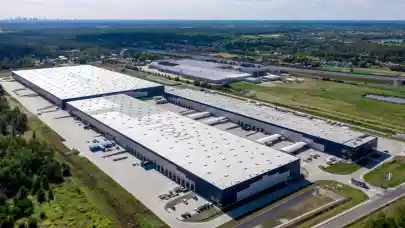
Since the onset of Russia’s full-scale invasion, Ukraine has experienced profound demographic and economic shifts. One of the most significant developments has been the increasing strategic importance of the country’s western regions—Lviv, Ivano-Frankivsk, and Zakarpattia—as safe havens for internally displaced persons (IDPs), as well as new focal points for business relocation and investment. The Ukrainian Real Estate Club has summarised the situation for Property Forum.
According to the United Nations, as of February 2025, there are approximately 3.7 million internally displaced people in Ukraine. While the eastern regions host the largest share of IDPs, the western regions have also seen a substantial influx, with 20% of IDPs located there as of April 2025. This migration has led to a significant increase in demand for housing and services in these areas.
According to Ukrainian analytical sources, including Property Times, the western regions have seen a multi-fold increase in demand for housing since early 2022. In particular, the city of Lviv has been at the forefront of this trend. A regional capital with a strong cultural identity and proximity to the EU, Lviv has seen sharp growth in rental prices and an increasing volume of transactions in both primary and secondary housing markets. The average cost per square meter has more than doubled over the past few years, reaching approximately $1292 per sqm. In the city centre, prices for one-room apartments can reach up to $1575 per sqm. Rental prices have also surged, with one-room apartments in the city centre renting for around $409 per month.
The region is characterised by the most active launch of new projects in both residential and commercial real estate. For the first time, Lviv and the region outperformed Kyiv in terms of investment attractiveness, according to surveys conducted by the Ukrainian Real Estate Club in 2023 and 2024.
The Ivano-Frankivsk region has similarly witnessed a boom, driven not only by IDP relocation but also by a surge in interest from domestic investors and diaspora communities. Its compact urban form, relative safety, and well-developed infrastructure have made it a favourable destination for families seeking long-term relocation. Notably, the local authorities have launched initiatives to simplify the permitting process for new residential construction and to convert non-residential buildings, such as former schools or administrative offices, into temporary or permanent housing for displaced persons.
The average cost per square meter in Ivano-Frankivsk increased from $562.85 in January 2023 to $685.53 in early 2024, marking a 21.7% rise. Rental prices have also climbed, with one-room apartments renting for approximately $300 per month. The city's growing reputation as an IT hub and its appeal to young professionals have further fuelled this demand.
Zakarpattia (Transcarpathian region), bordering Hungary, Slovakia, and Romania, has become increasingly attractive for businesses considering relocation closer to European supply chains. Uzhhorod, its administrative centre, has seen a steady increase in office demand and logistics development. Notably, real estate prices in Uzhhorod increased by 23% in both the primary and secondary markets in 2024. At the beginning of 2025, the average cost of a one-bedroom apartment in Uzhhorod increased by 16% over six months and reached $64,000.
However, this rapid growth has also brought challenges. Infrastructure in many towns is under pressure, with increased demand for schooling, healthcare, and public services. The shortage of affordable rental housing has been particularly acute, prompting municipalities and NGOs to partner on temporary housing solutions, including modular homes and adaptive reuse projects.
The western shift in Ukraine’s real estate dynamics is likely to have long-term implications. These regions are increasingly viewed not only as safe spaces during wartime but as future economic anchors in a post-war recovery scenario. For investors and developers, the message is clear: Western Ukraine is no longer peripheral. It is a key territory where humanitarian, housing, and business strategies intersect—and where resilient, forward-looking urban development is already underway.



